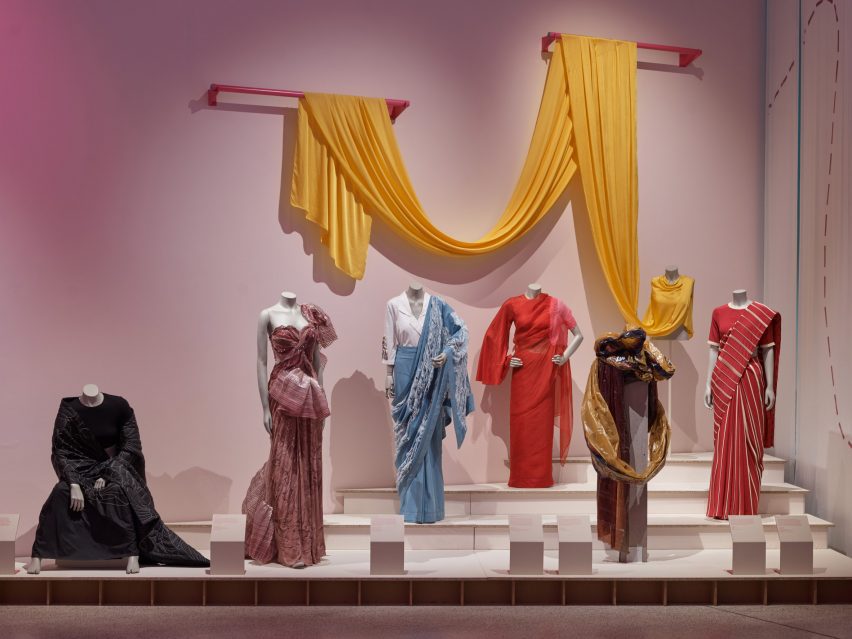The first sari to be worn at the Met Gala and sequins made from discarded X-ray film sourced from hospitals feature in the Offbeat Sari exhibition, which showcases around 60 contemporary saris at London’s Design Museum.
The Offbeat Sari is the first UK exhibition to explore the contemporary sari, according to the Design Museum. The show opens today in a cavernous space within the museum’s subterranean gallery, illuminated by thin neon pendant lights.
Hailing from India and wider South Asia, a sari is traditionally thought of as an unstitched drape wrapped around the body from shoulder to waist.
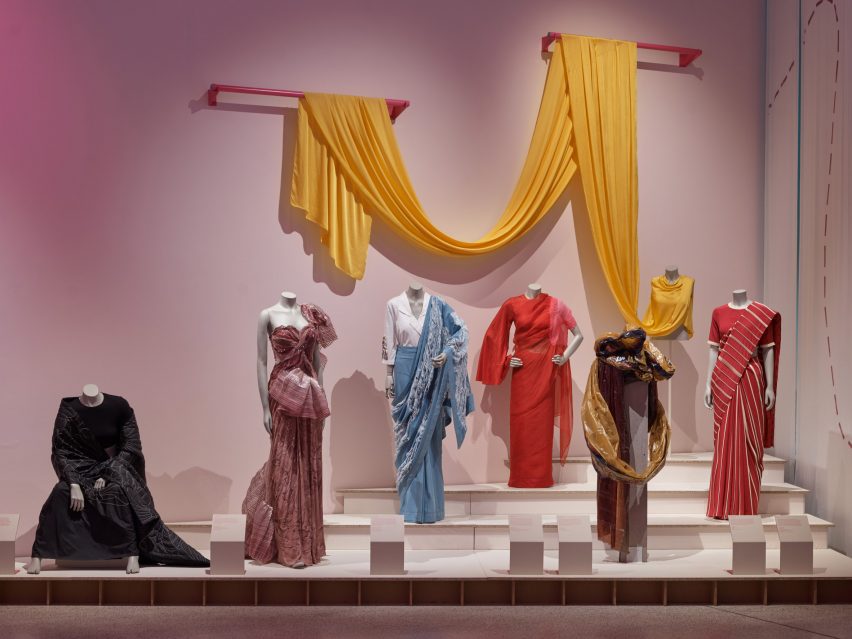
In recent years, designers have been reinventing the 5,000-year-old garment to serve young people’s growing interest in the sari, which has led to its revival, according to Design Museum head of curatorial Priya Khanchandani.
“Women in cities who previously associated the sari with dressing up are transforming it into fresh, radical, everyday clothing that empowers them to express who they are, while designers are experimenting with its materiality by drawing on unbounded creativity,” said the curator.

Split into various themes such as identity and resistance, the exhibition presents around 60 contemporary saris created by a range of established and emerging designers.
Among the garments is the first sari to be worn at New York’s Met Gala in response to the annual ball’s 2022 theme, Gilded Glamour.
Embellished with semi-precious stones, the tulle Sabyasachi-designed sari worn by Natasha Poonawalla features a statement train and was paired with a gold Schiaparelli bodice with protruding, orbit-shaped elements.
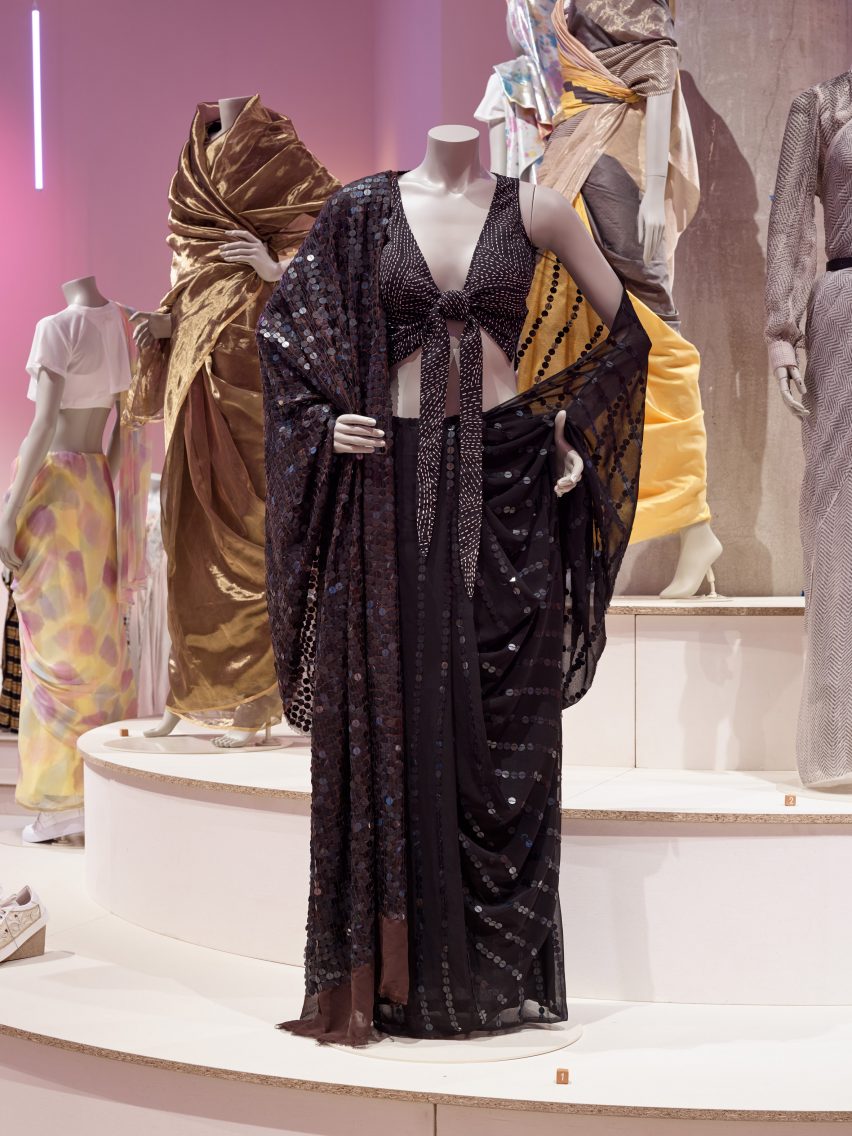
Another navy blue sari by Abraham & Thakore is characterised by delicate sequins that were made using discarded X-ray film salvaged from hospitals – a design that aims to address the issue of sustainability within the fashion industry.
Also on display is a purple georgette silk sari embroidered with shimmering acrylics, sequins and crystals. Founder of the #DeGenderFashion movement, author and comedian Alok previously wore the garment to highlight their belief that saris can be worn by anyone, regardless of gender identity.
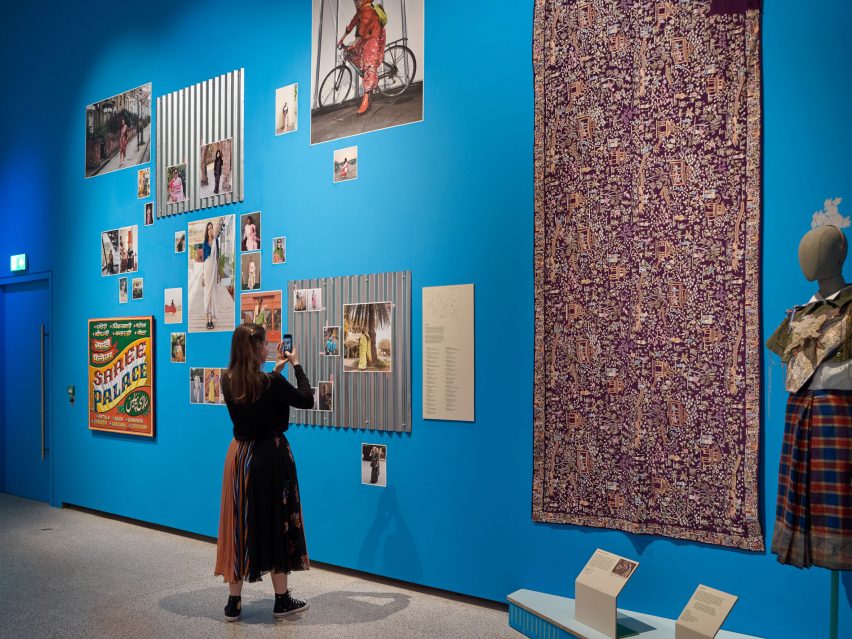
Contrasting textiles such as distressed denim and woven stainless steel make up other saris in the exhibition, highlighting the garment’s versatile evolution.
Within the show’s “movement” section are a number of saris worn by young people while engaging in sports. These include a garment adorned with cherry blossom motifs that was donned during a cricket match as well as a polyester chiffon sari, which is among the outfits worn by a group of women who have begun to skateboard in saris – a growing trend, according to the museum.
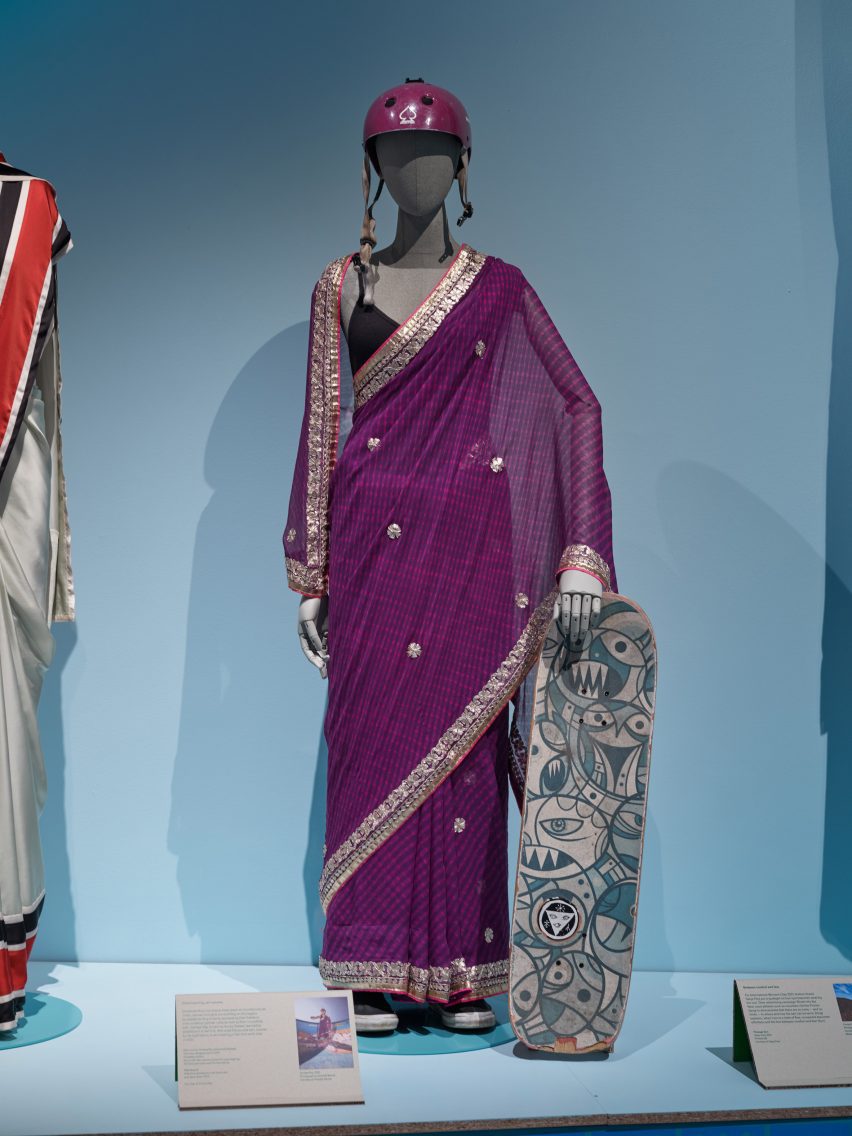
There is also an area dedicated to the craftsmanship involved in sari-making that explores how its history has transformed over the 21st century.
“The sari is experiencing what is conceivably its most rapid reinvention in its history. It makes the sari movement one of today’s most important global fashion stories, yet little is known of its true nature beyond South Asia,” explained Khanchandani.
“For me and for so many others, the sari is of personal and cultural significance,” reflected the curator.
“But it is also a rich, dynamic canvas for innovation, encapsulating the vitality and eclecticism of Indian culture.”
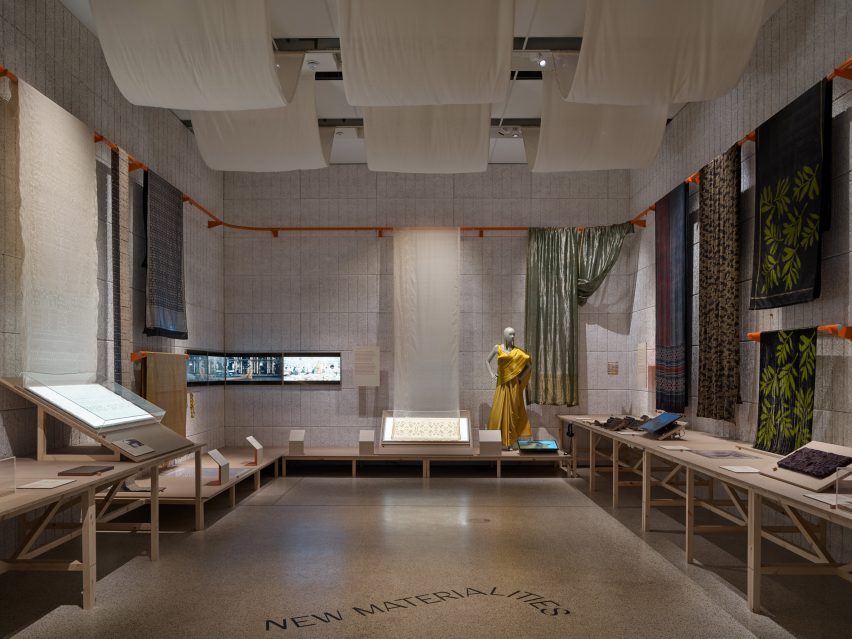
Chinese artist Ai Weiwei’s first design-focussed exhibition is another show that is currently on display at the Design Museum until late July. In other recent fashion news, designer Rick Owens has released a collection of wearable helmets that double as fluorescent floor lamps.
The photography is by Andy Stagg.
The Offbeat Sari is on display at London’s Design Museum from 19 May to 17 September 2023. See Dezeen Events Guide for an up-to-date list of architecture and design events taking place around the world.
Project credits:
Curator: Priya Khanchandani
Associate curator: Rashmi Varma
3D design: Studio Mutt
2D design: Stuthi Ramesh

